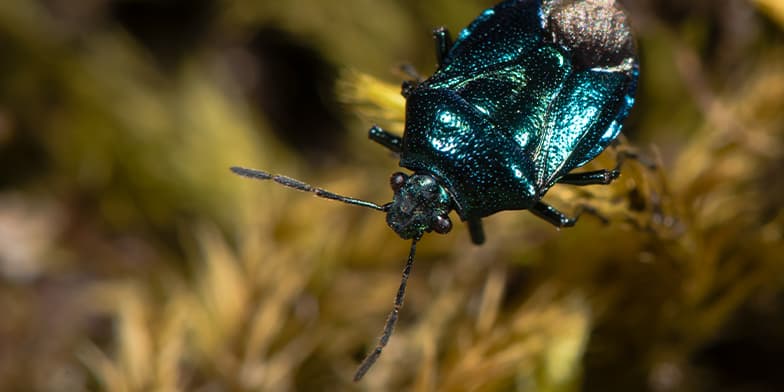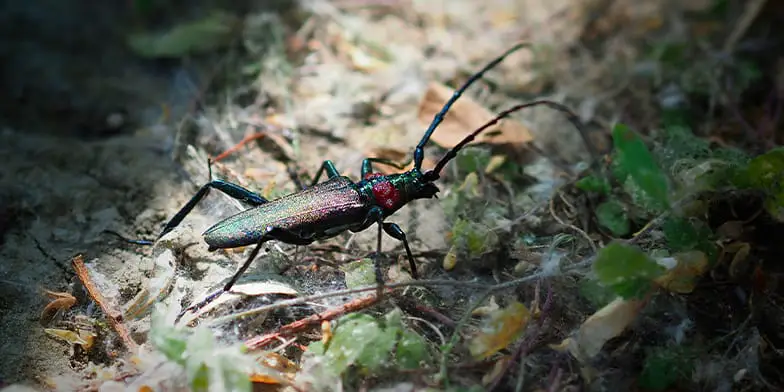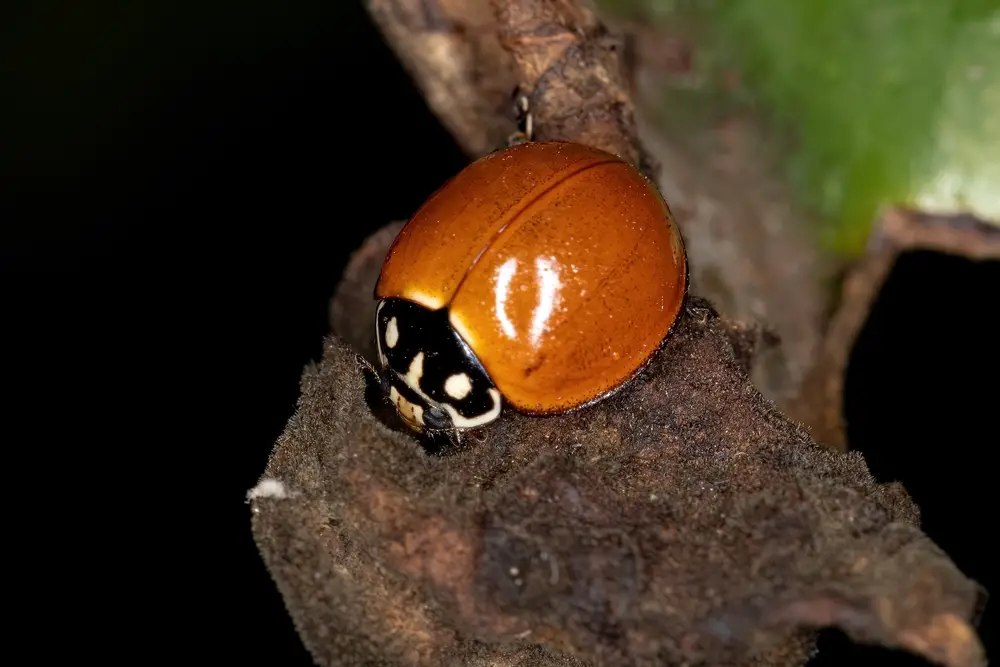
Almost everyone has had an annoying experience with beetles. You can come across these six-legged insects at any time of the day because they need to be active during both daytime and nighttime for survival. You might not be surprised to learn that these creatures have a lot to look out for, and possess a lot of depth and complexity.
During the night you will find most beetles on the ground, since it’s one of the warmer places to be after the sun has gone down. This temperature suits the beetle’s nighttime activities best, and you’re most likely to find them taking shelter in leaf litter, or under fallen trees or branches.
Given the diversity of this insect species, there is a lot you might not know about beetles, especially regarding their nocturnal adventures. To provide a little more more insight, in this article I have provided all the information I could find as to where beetles go at night and what they do.
I hope you find it as interesting as I did – let’s dive in!
Are Beetles More Active at Night?
Most adult beetles are active at night. In order to regulate their own body temperature, beetles rely strongly on the surrounding temperature and the ground on which they crawl. This ambient warmth is what keeps them going through the dark hours of the night.
The adult beetles already have well-developed flight muscles. As a result, they have the capacity to warm up their body without any sunlight or additional heat. Although adult beetles emerge and fully develop during the summertime, they eventually adapt to the changing humidity and can survive.
Furthermore, beetles can be more active during the night because there are lesser risk factors that can endanger their being. This is because they can more freely protect themselves during the dark. This enables them to conduct a lot of essential tasks.

What Do Beetles Do at Night?
There are multiple reasons for why beetles will wander around at night. Alongside the warm ground and ideal temperature, nighttime also makes their survival easier.
Seeking Light
The light also offers them additional heat. This is why you will see beetles flying around street lamps or your porch lights. The light also ensures that they are safe from predators. Through the light provided, they can navigate better.
However, sometimes, specifically, artificial lighting can cause them a lot of frustration. You have probably seen lots of beetles going crazy around light sources and flying and crawling aimlessly. This is because lights can confuse the navigational system of these insects.
As light sources emit beams in every direction, beetles cannot always receive the light that guides them to their natural safe spaces.
Food
Beetles have a very flexible diet yet finding food is a difficult task for them. During the night, beetles actively hunt for food. This is why you can sometimes find them sneaking into your house. They are simply hungry. Some beetles rely on the stars to navigate them towards food. They cannot do so freely during the daytime as there are many predators around.
May beetles, falling under the nocturnal category, are fond of the decaying plant materials in the soil. They also chew through the plant leaves and flowers.
At nighttime, the American Burying Beetle actively looks for carcasses. Upon finding it, the beetle flips onto its back and uses its legs to carry the carcass into a new and safer location. This carcass is used as food for eggs and the mother beetle.
Mating
The dark enables the beetles to mate without being preyed on. They do so on the sides of a tree. As a result, they are mostly protected from birds or lizards.
Furthermore, the light energy provided by nearby light sources also assists in the mating process. Some beetles such as fire beetles or glow-worm beetles are known to be bioluminescent terrestrial animals. The creation and emission of light by a living organism is referred to as bioluminescence. This feat is highlighted during nighttime.
Alongside these, dung beetles even dig tunnels under the soil of their pads. After mating, the new egg is placed inside this soil so that it can fully develop. They also carry a portion of the dung for breeding or consumption. This also helps with soil fertility.
Bark beetles chew through the bark of trees to create tubes. Such tubes are referred to as galleries. After mating, their eggs are placed within these galleries.
Hiding
It is common for a lot of insects and animals to hide from predators in the dark. It is something that they are born with. Light sensors are present all over the insect larva of beetles. This is in association with their preference for darkness.
This is why beetles hide in quiet and dark spots to protect themselves from the bigger insects or animals. Examples can be stones, under woodpiles, or leaves that have fallen on the ground. You can even find them crawling around your basement or storage unit.
The dark also enables them to blend into their surroundings better. To hide from predators, beetles often camouflage themselves with their surroundings. They even imitate the colors, shape, and structure of the other insects to confuse and throw off predators.
Some beetles even take the next step when it comes to protecting themselves. Bombardier beetles have a unique defense mechanism that keeps all predators at bay. Upon being threatened or attacked, their abdomen produces an internal chemical explosion. As a result, a splash of boiling and painful liquid is sprayed towards the predators.
Ladybird beetles possess bright colors that act as a threat to predators. In addition, they also play dead by lying on the ground for long periods to deceive their predators. Their leg joints hold a fluid with an unpleasant taste and smile. They use this to their advantage by clustering together. This assembling exhibits a very bad smell and in turn, protects them.
Are All Beetles Nocturnal?
Most beetles are nocturnal, but there are some species that are more often active during the day. For example, Blister beetles and Japanese beetles like to feed between the hours of 9am and 3pm.
The blister beetles are active during the day. This is because they rely on the sun being out to feed on crops such as tomatoes, potatoes, and other garden vegetables as well.
Japanese beetles are well known for preferring the daytime. Their activities are heightened when there are no winds and the temperature is above 85 °F. They prefer days that are warm and sunny. T feed on plants that are within direct sunlight. They also chew through grass roots and even flowers. However, they do not kill off any plants.

Flea beetles also prefer warm weather. Although this might depend on the life cycle in which beetles are. They like to feed on crops or weeds. Mustard is a common example.
Green June beetles are the most active during the summer which implies that they prefer heat. In the middle of summer, they feed upon the fruits and foliage of trees. Their mating process is also prominent during the months of July and August.
Conclusion
Beetles are small, and their survival is never guaranteed. To best get through their day, they find solace during the night. The humble beetle is never as simple as they look.
I hope this article has helped you learn all about where the beetles go at night and why they are more active during that time. Thanks a lot for reading.
Driven by a passion for those tiny creatures that rule our world, we at Bug Domain strive to be your go-to resource for information on insects.



